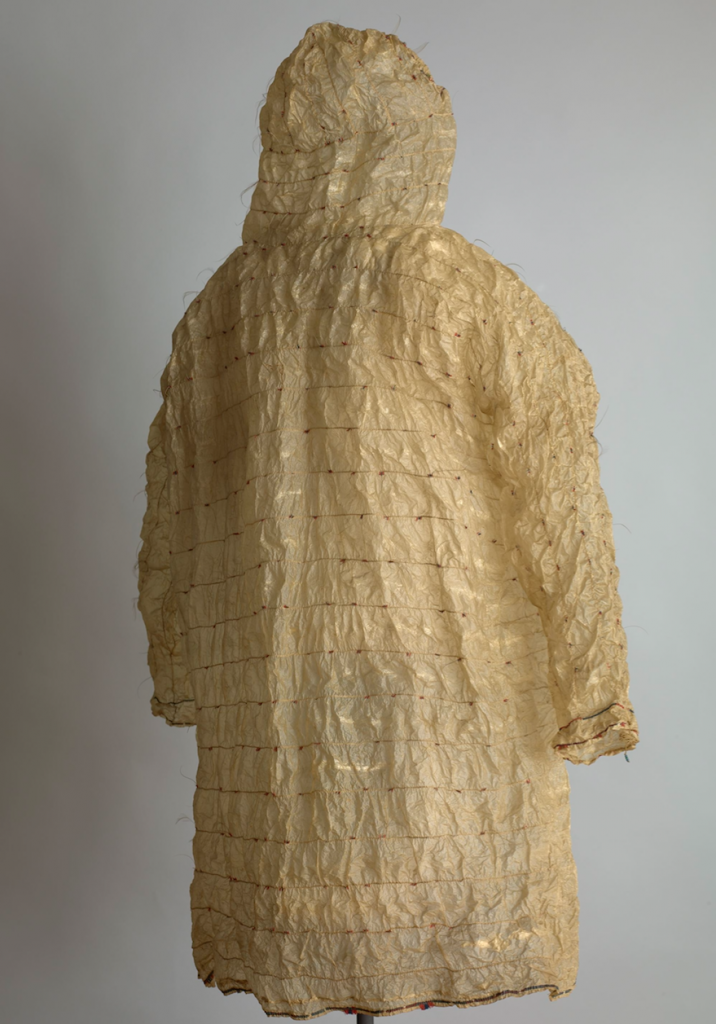The Story Behind the Artifact: Arctic Museum’s Seal Intestines Raincoat
By Tom Porter
The Peary-MacMillan Arctic Museum exhibition, Threads of Change: Clothing and Identity in the North, which looks at clothing through history in the Arctic, features a man’s raincoat from Alaska—made out of seal intestines. “It may seem unusual today to make a coat out of seal guts, but they actually make excellent waterproof garments,” said curator Genevieve LeMoine, who says it likely dates back to the 1860s.
“Whoever made these would have had to clean the intestines, inflate them, let them dry, then split them open very carefully and sew them back together again, to make, in this case, quite a large garment.” LeMoine says the painstaking work also includes decorative elements, including the remnants of bird feathers.
Like a number of the museum’s artifacts, this has a curious tale attached to it, said museum director Susan Kaplan. “It turned up in a barn in western Maine in 2001, where it had been for decades, maybe more than a century. The barn had been the property of a retired sea captain called Henry Hayes, who commanded a whaling ship in the Bering Sea.
“Hayes plied his trade on both the Alaskan and the Siberian sides of the Bering Strait,” said Kaplan, “and this garment originated in the Aleutian Islands, making its way back to Maine as a souvenir around 150 years ago.
“The coat would have been visually stunning when new, as well as being technologically brilliant: light, waterproof, and very packable as you would have been able to press this material down without damaging it.”
It may have been durable back in the day, added Kaplan, but when they found the item sixteen years ago, it was on the point of disintegration. “We couldn’t even take it off the hanger for fear it would fall apart. We sent it to a conservator who very carefully humidified it to get the hanger out. Then we were able to reshape the garment.”
The museum has two garments like these—both souvenirs of Captain Hayes—although only one is on display at a time, inside a temperature-controlled glass case. “It’s the most delicate item in here,” said Kaplan. “It’s like a potato chip. Whenever we move it, we hold our breath!”
Threads of Change: Clothing and Identity in the North, will be on display in the Arctic museum until the end of 2019.